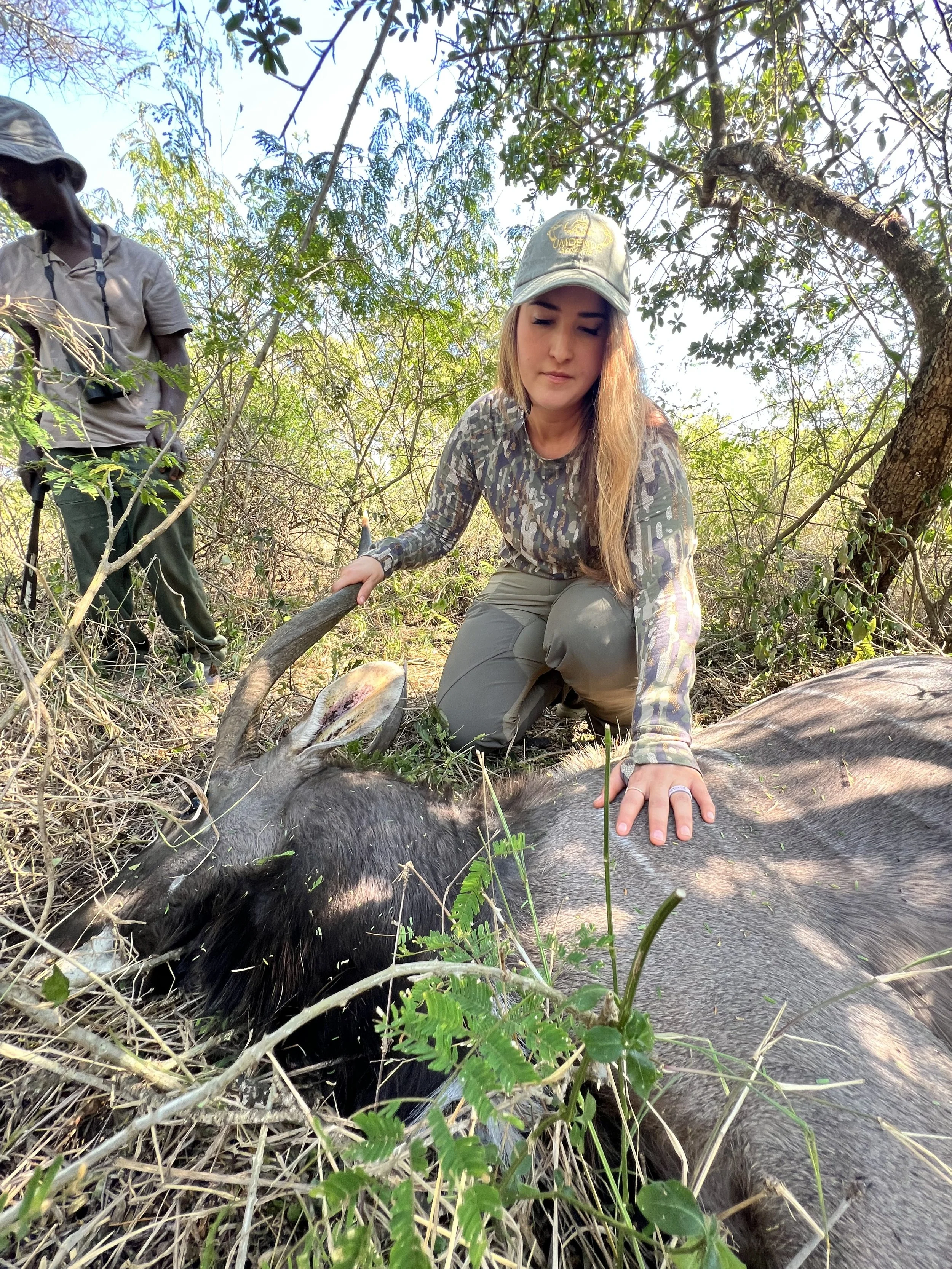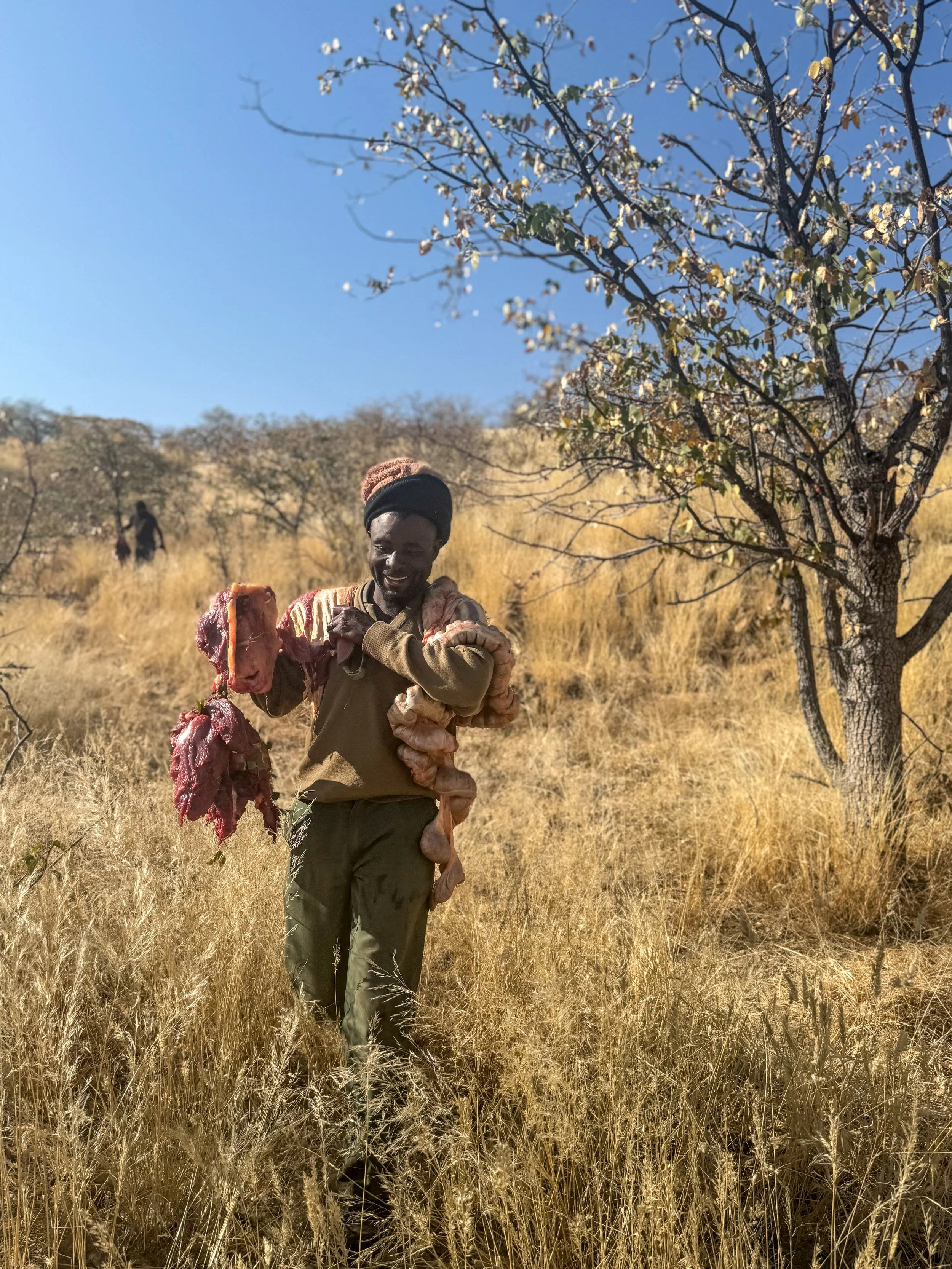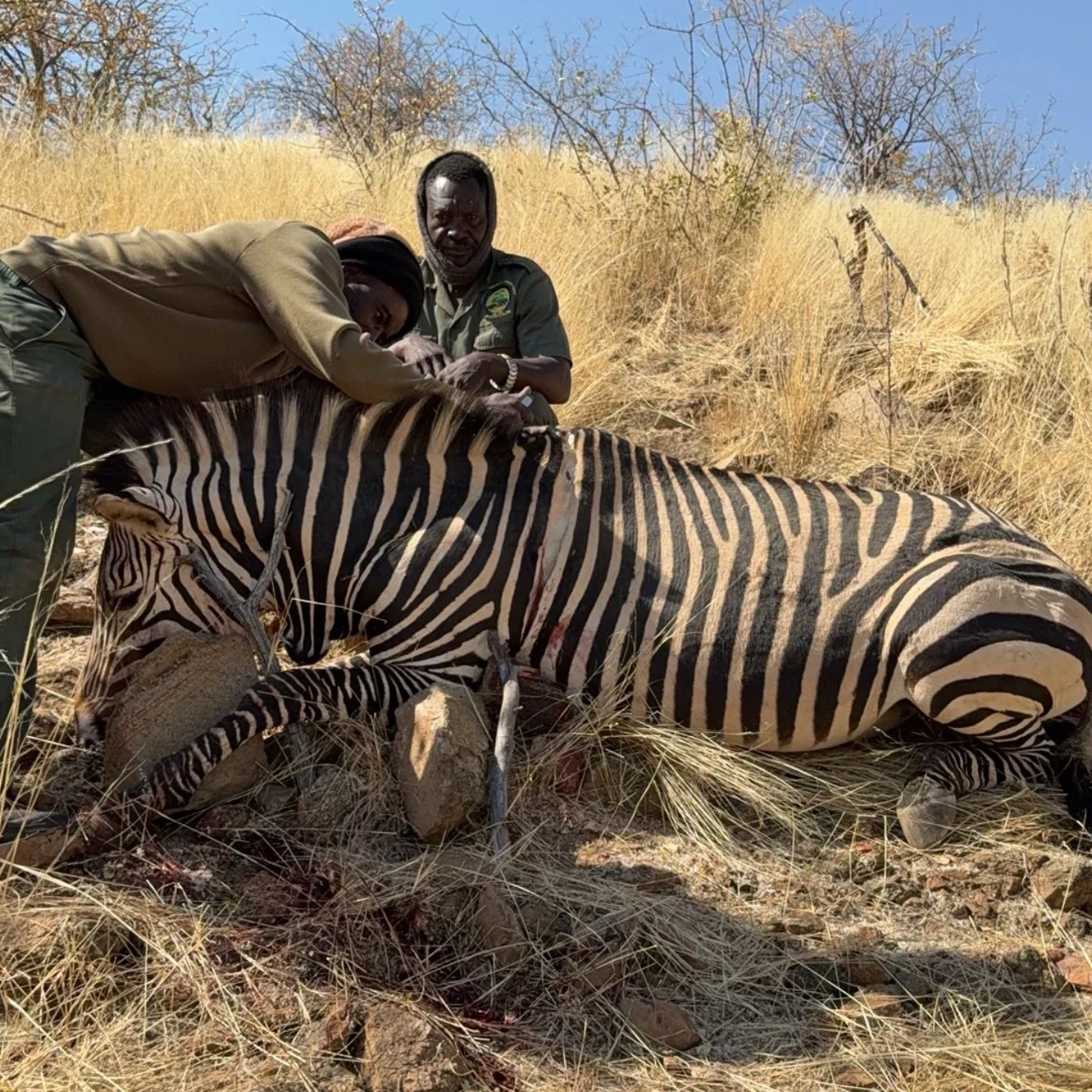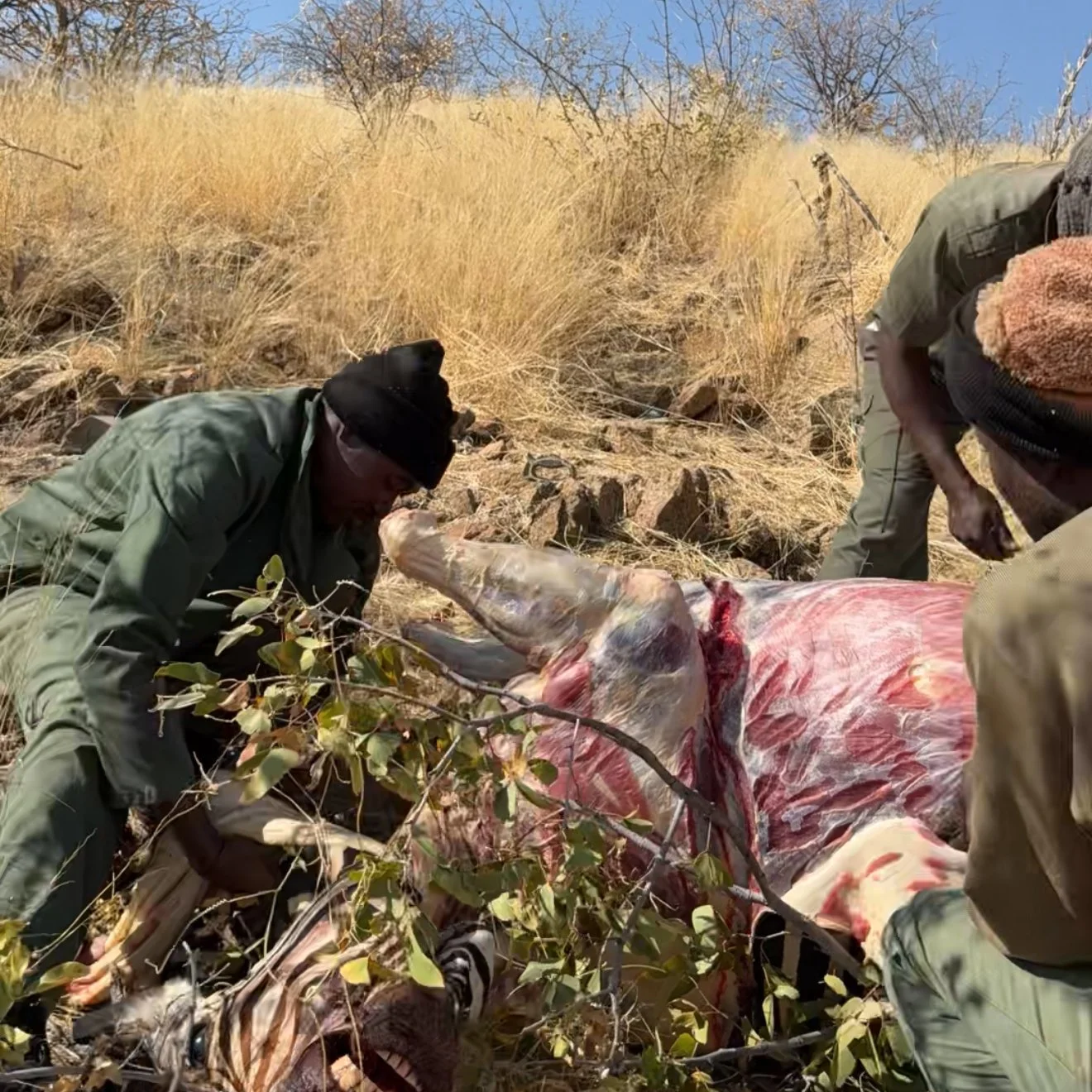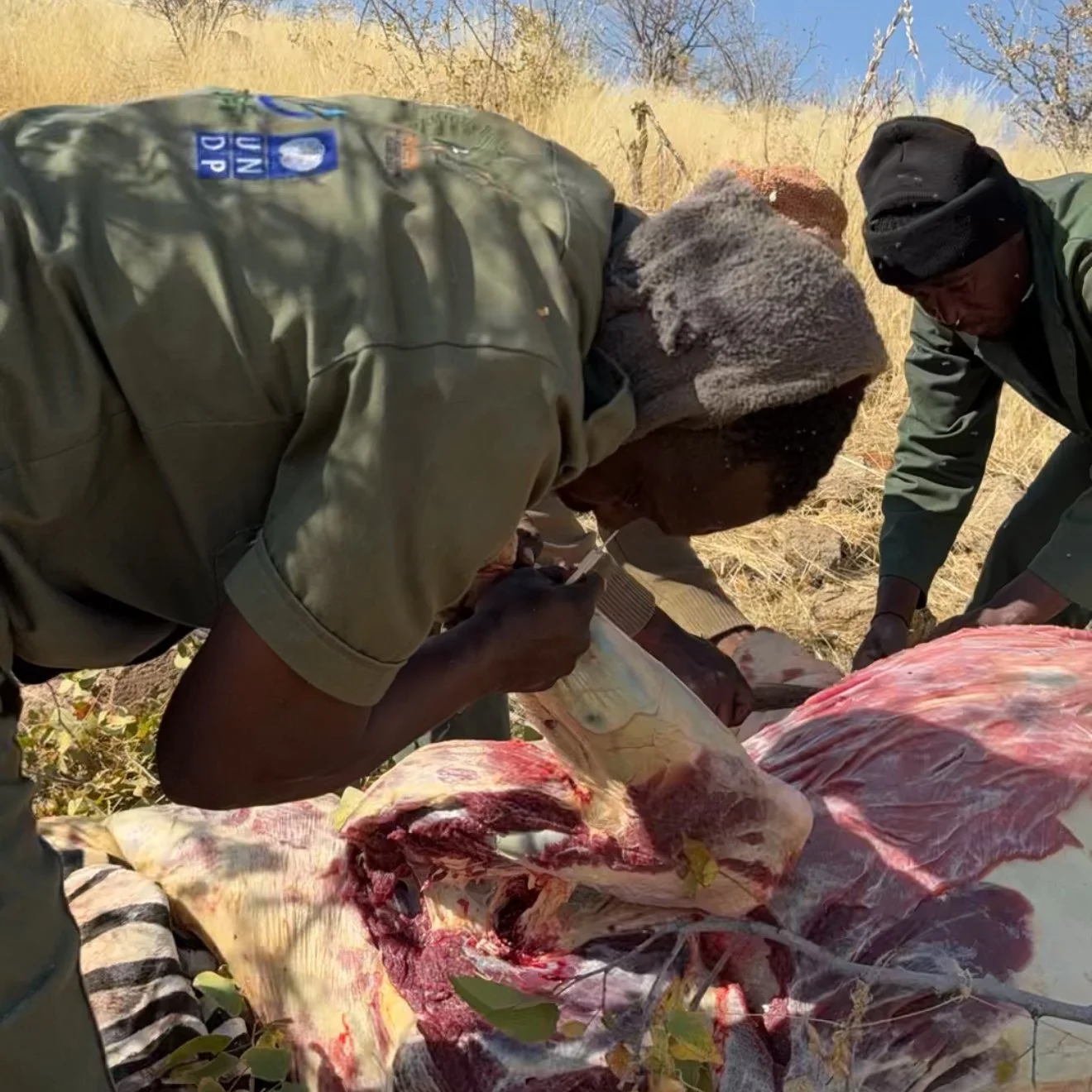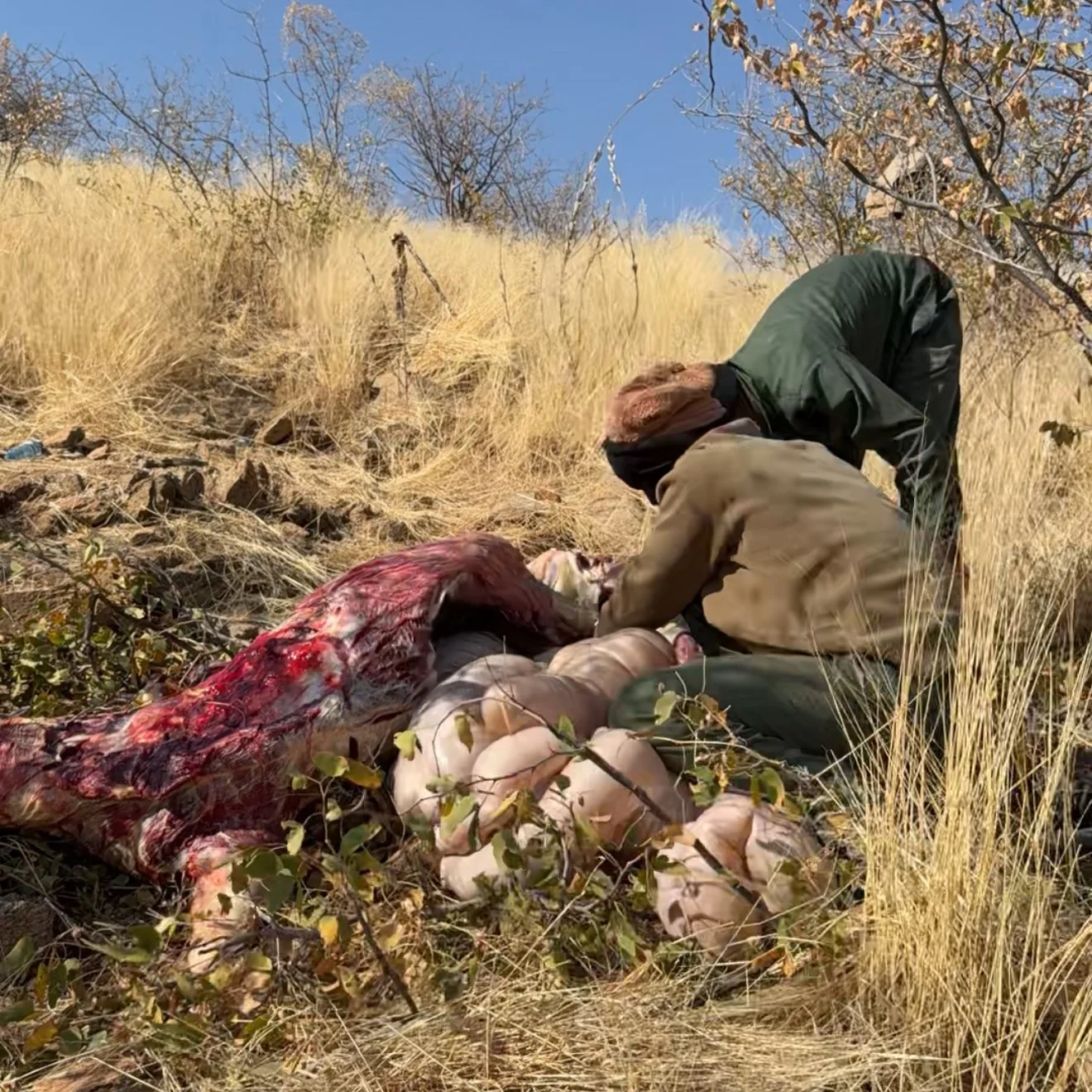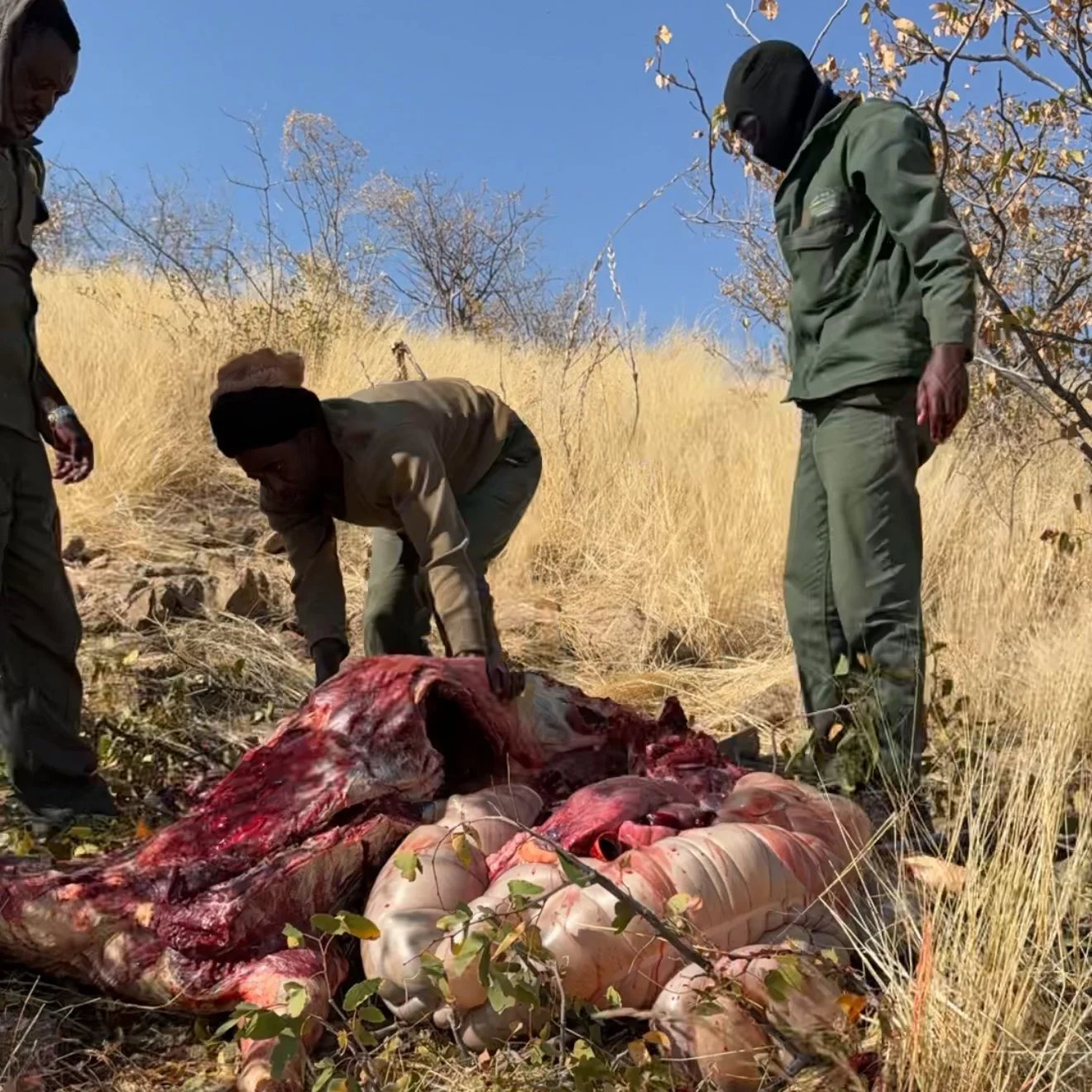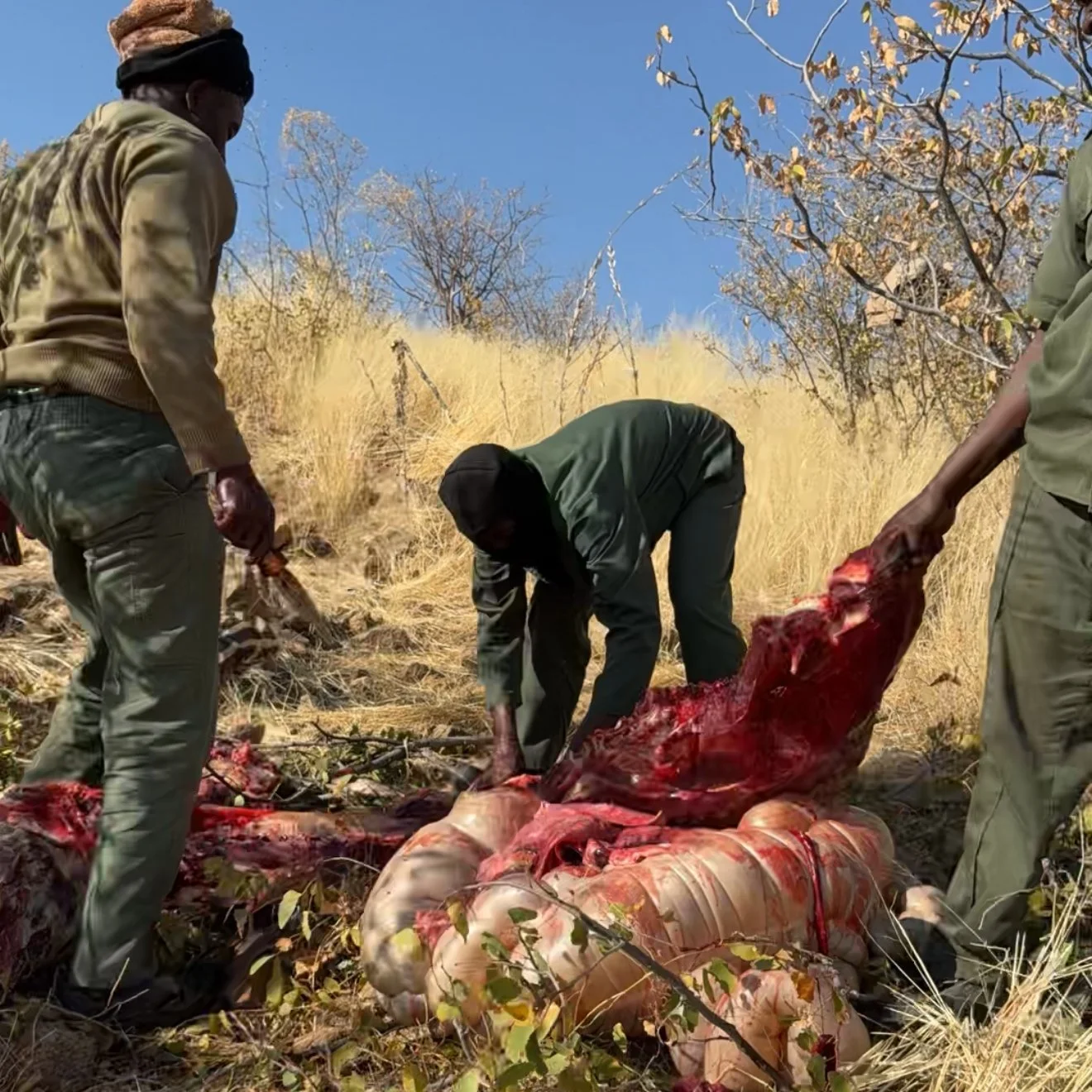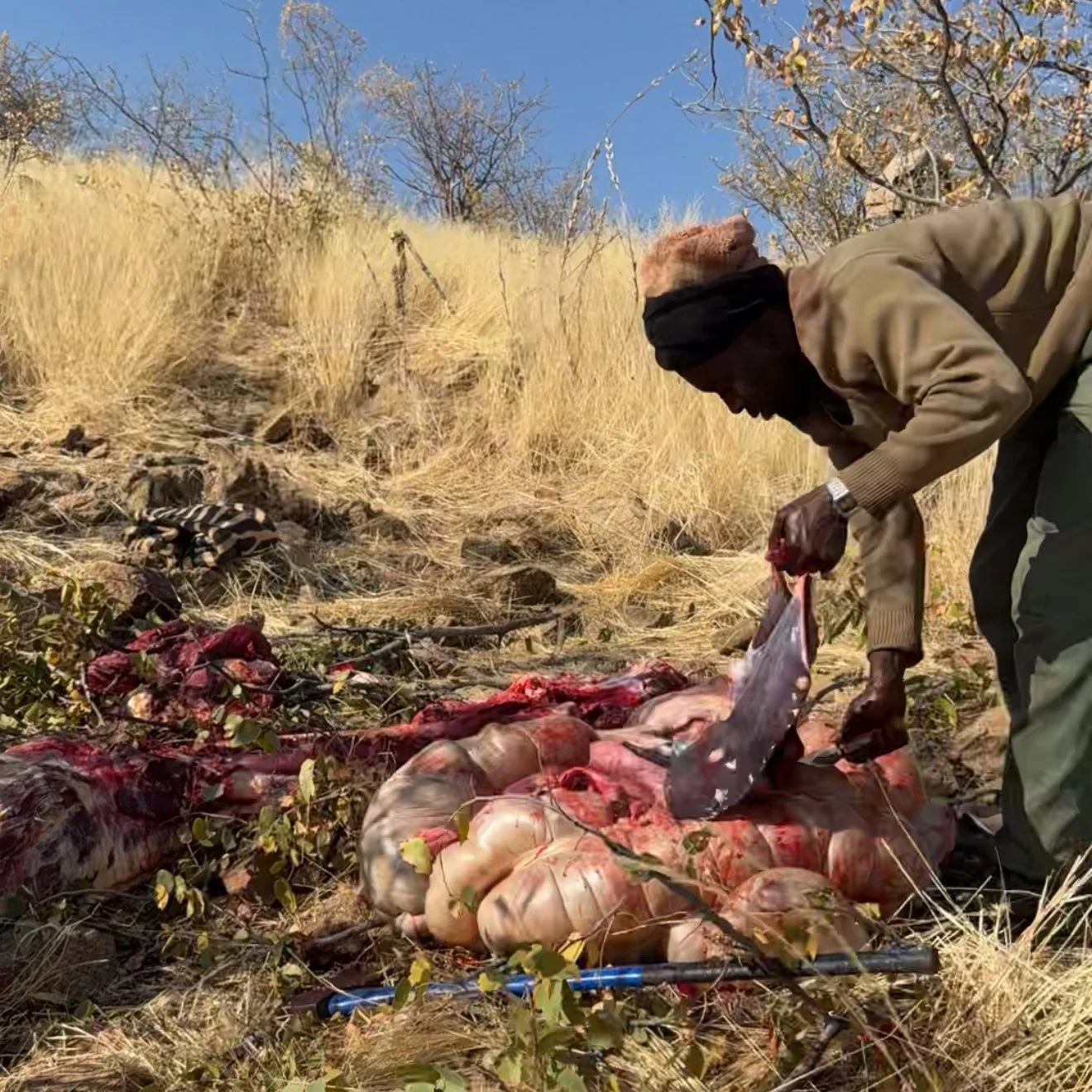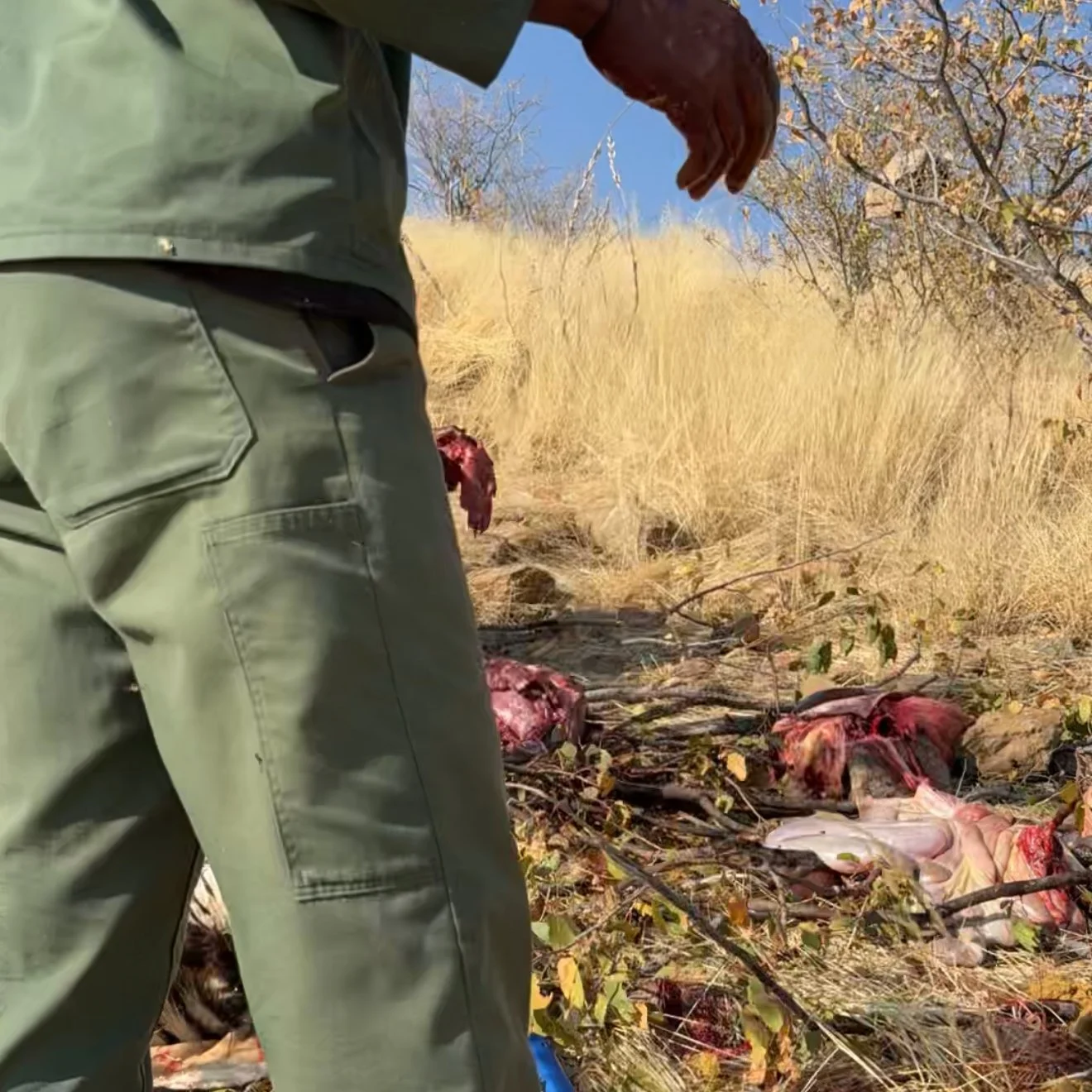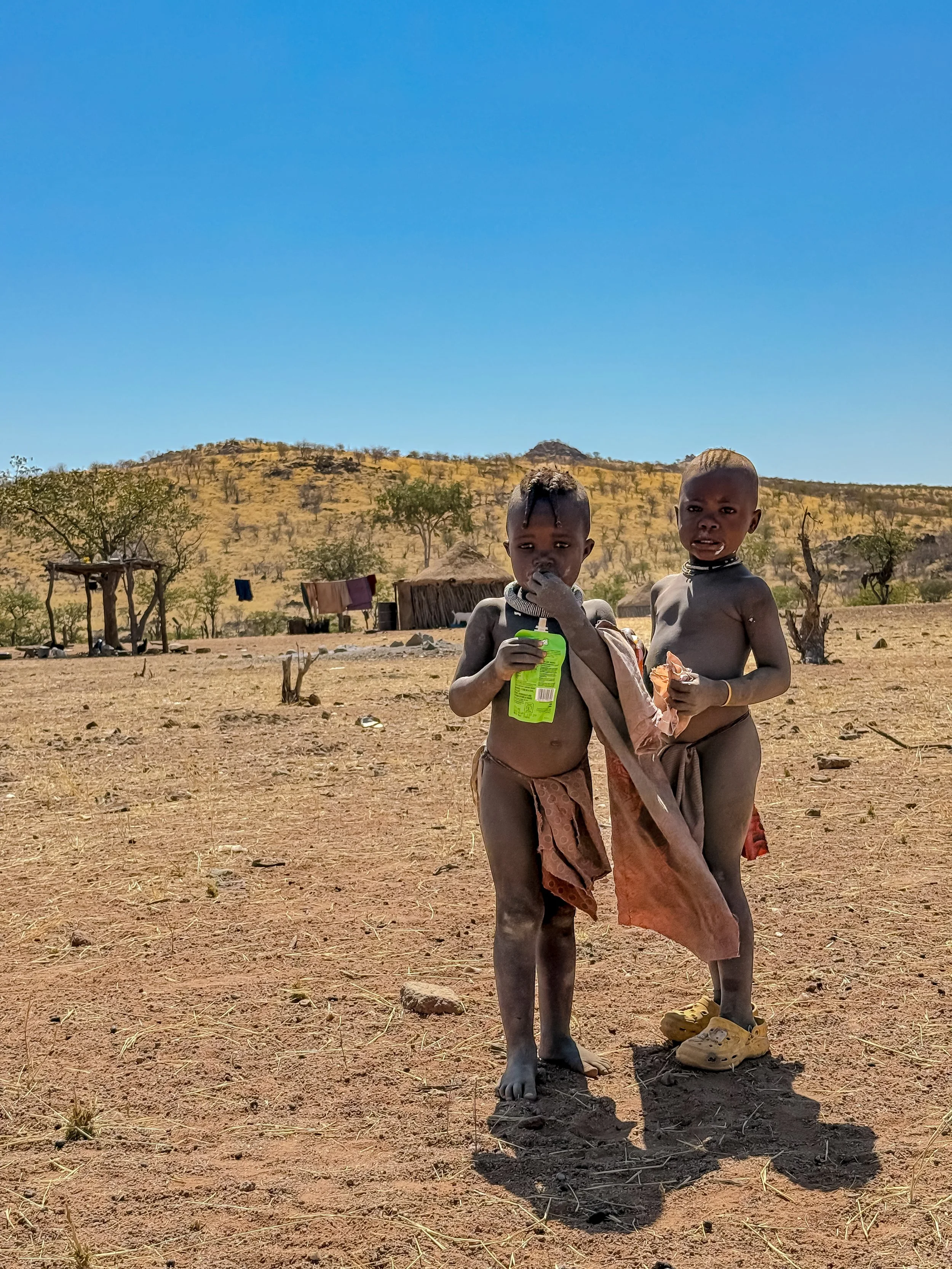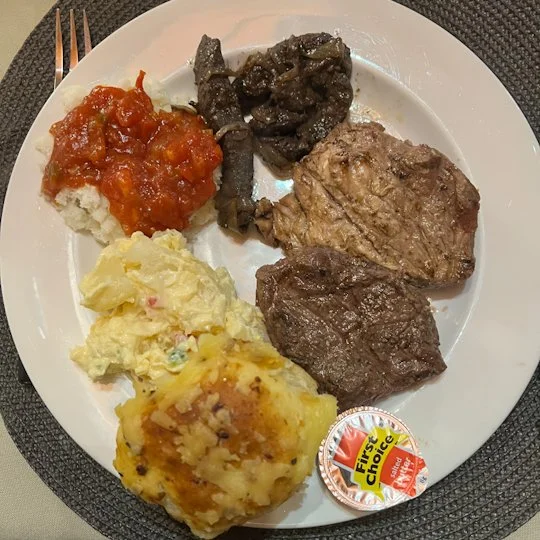Hunting in Africa: Nothing Goes to Waste
What really happens to the meat after a hunt in Africa? In Namibia, nothing goes to waste — from the skinners in the field to conservancies and local villages.
Trophy Hunting Misunderstood
In my previous blog, I talk about how safari hunting is so much more than a “trophy hunt.” Many critics of African hunting have given this term a negative connotation, making it seem as though hunters are only there to mount the animal and take the head as a prized possession.
Merriam-Webster defines “trophy” as: something gained or given in victory or conquest especially when preserved or mounted as a memorial./trop
For many hunters, mounting the animal is about memory - a memento to remember the experience, the challenges, and the triumphs. It’s a way to respect that animal into the future.
Hunters are not stone-cold killers. They deeply respect the animal’s life, and there’s a bond between hunter and game that non-hunters may never understand. While this blog will focus on what happens to the rest of the animal, I’ll dig deeper in a future post into how hunting is conservation.
The First Steps After a Hunt
Once an animal is shot with a rifle or bow and killed, time is of the essence. Hunters quickly take photos, another way to memorialize the experience, before the animal is skinned and carved.
Whether this happens in the field or at a skinning shed depends on where you are hunting. In Kaokoland, Namibia the lands are vast, and we were often far from a shed, so trackers would begin their skinning right there in the field. For large game animals, additional skinners are often brought in to help.
Hunters also decide at this stage what type of mount or rug they’ll do. This determines how the skinners approach the animal, a detail I’ll get into in a future blog.
Nothing Goes to Waste
Once the skin is prepared, skinners move on to carving the rest of the animal. Unlike in the States, where I often see hunters only breast out birds and leave the rest, in Africa nothing goes to waste.
I remember two years ago in South Africa: my skinners were working on my nyala when a woman walked up out of nowhere. After speaking with the crew in Afrikaans, she began cleaning the intestines of the antelope. She wasn’t connected to our camp, just someone who heard we had a kill and came to ask for some. She would flush, clean and later eat or sell the intestines casing. My PH explained that 99% of the animals are used in Africa. Even our geese that we gave to a village; when asked how they cook them up, the matriarch of the village explained in Afrikaans to my PH that she boils them whole after plucking, every bit is used.
In Namibia, it was the same. Nothing wasted. I even filmed a short time-lapse of my zebra being processed in the field. After roughly 90 minutes, all that was left was the contents of the large intestine. NOTE below are a few photos from the carving process with images, if uncomfortable, just scroll past.
From Field to Village
In Kaokoland, we hunted on what’s called a concession. Each concession has a conservancy office and conservancies are made up of local people who live on the land. The conservancy manages the meat and divides it among families.
What many anti-hunters don’t realize is that rural African villagers often lack access to protein. Unlike you and I, who can pick from endless options at a grocery store, protein is a luxury. Many families live off corn or other carbs. Children in the Himba tribe, for example, showed signs of protein deficiency with bloated bellies.
After my zebra hunt, we drove more than an hour over rocky mountain roads to deliver the meat to the conservancy. There, the Game Officer from the Ehi-Rovipuka Conservancy accepted it, would lock it up, and eventually it would be divided amongst families.
We met with Herero villagers who would receive the meat. At the local store, we bought celebratory Black Label beers and shared them with the people. One woman, Maami, kindly took photos with me — though I wished I could understand their Herero language.
Better Than Beef
Not all the meat goes to villagers. In South Africa, part of my zebra went to feed our camp and staff. The rest, rich in yellow fat and not as edible, was delivered to a wildlife cat rehabilitation center, Emdoneni Cat Rehab Centre. There, injured cats are rehabilitated and released back into the wild.
This was rewarding to know that my zebra not only provided protein for people but also supported the conservation of other wild animals.
Many ask me what zebra tastes like. To Westerners, it feels foreign, even taboo, to think of eating something “like a horse.” But for me, eating the animal I’ve hunted is a sign of respect. Two years ago, when I tasted zebra for the first time, I was shocked at how much I loved it. After resting for 24 hours, the steaks were tender, rich, and flavorful. I remember describing it as better than beef.
-
Not all zebra are the same when it comes to meat. The zebra I hunted in South Africa two years ago was a Burchell’s zebra, and their fat is very different from the Hartmann’s mountain zebra I hunted in Namibia.
Burchell’s Zebra (plains zebra): Their fat is a deep yellow color due to the carotenoid-rich grasses they graze on. While it looks striking, the fat is waxy, strong-tasting, and doesn’t melt down well in cooking. Instead of adding flavor, it coats your mouth with a grassy, rancid taste. Because of this, skinners often trim most of it away. The lean meat is delicious, but the fat itself isn’t appetizing.
Hartmann’s Mountain Zebra: These zebras live in harsher, rockier environments with very different forage. As a result, their fat is much whiter and cleaner-tasting. Hunters and locals both consider Hartmann’s zebra to have superior eating quality.
This distinction is why, in South Africa, part of my Burchell’s zebra - especially the fatty hindquarters - went to the Emdoneni Cat Rehabilitation Centre. For the cats, that fat was actually an asset: a high-calorie food source that helps injured or orphaned predators recover. For people, trimming it off meant the lean zebra steaks we did keep were tender and flavorful.
Hunting Is Conservation
As you can see, nothing goes to waste with safari hunting. Minus the feces, every part of the animal is used. Families in rural villages receive protein they otherwise wouldn’t have. Wildlife rehabilitation centers benefit. Hunters themselves taste and respect the resource they’ve harvested.
I’ll share more in a future post about how hunting ties directly to conservation quotas, red-line regulations, and the sustainable use of wildlife. In the meantime, if this topic interests you, I encourage you to check out The Origins Foundation — one of my favorite resources for understanding the truth about hunting and conservation.
Until then, stay connected with me by signing up for my newsletter, you’ll be the first to know when my next blog goes live.


